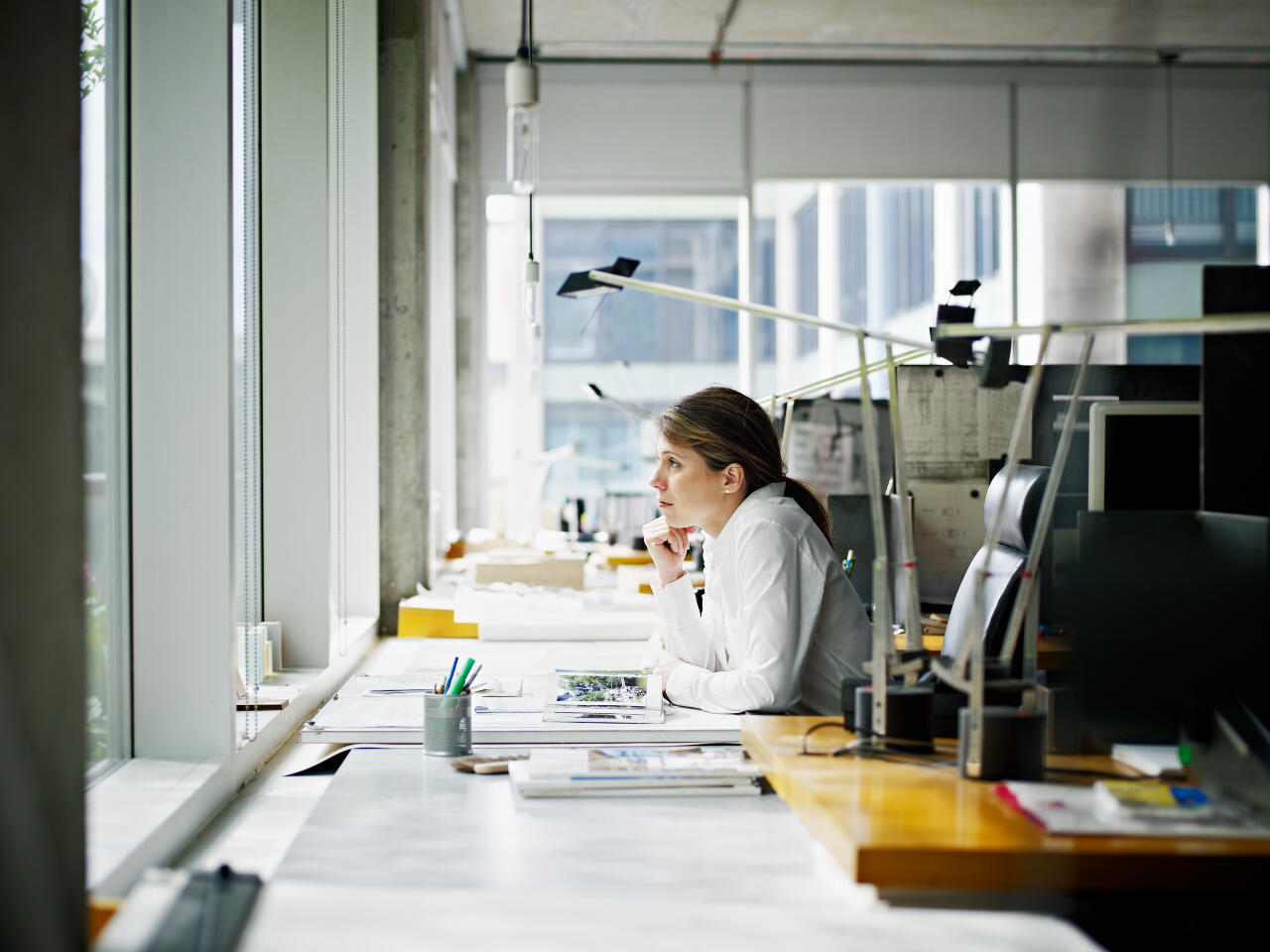Turns out, a little more natural light could go a long way in meeting employee office expectations as companies return to the on-site workplace after a year of remote work.

Image: GettyImages/Thomas Barwick
After months of remote work, companies are bringing employees back to the traditional office, albeit with new safety protocols in place amid COVID-19. On Wednesday, NEXT Energy Technologies released a report titled "The Case for Office Space: How Buildings Need to Change to Suit a Climate-Conscious, COVID-Weary Workforce." The report highlights employer and employee sentiments surrounding WFH productivity, attitudes about returning to the onsite workplace as well as the office modifications and company sustainability efforts employees want.
"We're seeing a standoff between companies that, for a variety of legitimate reasons, want their staff to return to in-person offices and a high-demand workforce that is holding more decision-making power than ever before," said Daniel Emmett, founder and CEO of NEXT, in a press release about the report.
SEE: IT expense reimbursement policy (TechRepublic Premium)
"The Great Resignation of 2021"
The so-called Great Resignation of 2021 has made plenty of headlines in recent months as employers send workers back to the office. As we reported in April, a Blind survey found that one in three employees said they would quit "if WFH ends." According to the Next Energy Technologies report, 74% of employees said they "would consider leaving their job if their company wasn't meeting their expectations" and a similar number of decision-makers (72%) believed employees would switch positions if their expectations were not met.
The majority of employees said their employers were "only meeting some of their expectations, or none at all," while the vast majority of decision-makers believe the organization is "meeting some or all of its employees' expectations for a healthy office environment," per the report.
Remote work productivity
Since the switch to WFH, the vast majority of decision-makers (85%) feel as though "company productivity has increased or remained the same" compared with 79% of employees, according to the report. Regardless of these perceived productivity estimates, there remains a marked difference among decision-makers and employees when it comes to returning to the traditional office.
For example, 32% of decision-makers have required employees to go back to the traditional workplace full time and another 33% require "employees to return on a hybrid schedule," however, 15% of workers said they "want to work in the office full-time," according to the report.
Office sustainability demands
The report also focuses on employee expectations surrounding company sustainability efforts, climate change and employee health. Overall, 83% of employees "believe the climate plays a direct role in their individual health" and 77% of decision-makers believe the health of their employees has a "direct tie" to the "climate crisis," per the report.
"We all went through a lot in the past year, and not just because of the COVID pandemic. Wildfires, extreme heat, droughts, floods and other unpredictable climate events are all taking a toll on people's well-being," Emmett said in the release.
The top sustainability factors employees want companies to address include "reduced reliance on single-use materials" (51%) and renewable energy (66%). While 80% of decision-makers said they would "improve their office's sustainability to maintain employees," only 19% of decisionmakers said they'd "reduce single-use materials" and about half would be "willing to implement more energy-saving," per the report.
"Most rational people, including business decision-makers, understand that the climate crisis is directly linked with their individual health. Employees being asked to return to work are not willing to compromise their beliefs," Emmett said in the release.
Redesigning the new office
More than half of employees said "working in the office negatively impacted their health," 47% said the "old office impacted their mental health" and 37% said "a lack of natural light impacted their health." Overall, "decision-makers are more concerned about traditional health and safety measures," the report said. These measures include improved sanitation (51%), adding space between office workstations (46%) and improving ventilation/HVAC systems (45%).
SEE: Juggling remote work with kids' education is a mammoth task. Here's how employers can help (free PDF) (TechRepublic)
Among employees, 61% "want increased health and safety measures" and 67% "want more comfortable design features," per the report. The top complaints about the pre-pandemic office include the lengthy commute (46%) and the "lack of natural light" (39%), however, less than one-quarter of decision-makers (24%) said they would "consider improving access to natural light or more windows," according to the report.

Best of the Week Newsletter
Our editors highlight the TechRepublic articles, downloads, and galleries that you cannot miss to stay current on the latest IT news, innovations, and tips. Fridays
Sign up todayAlso see
- Employers are watching remote workers and they're monitoring these activities (TechRepublic)
- Working from home: How to get remote right (free PDF) (TechRepublic)
- Contract work policy (TechRepublic Premium)
- ZDNet's top enterprise CEOs of the 2010s (ZDNet)
- CXO: More must-read coverage (TechRepublic on Flipboard)







 English (US) ·
English (US) ·